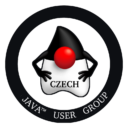Březnové setkání Pražské Czech Java User Group
proběhne 26.3.2012 od 19h hodin v posluchárně S5 na
Matematicko-fyzikální fakultě Karlovy Univerzity na
Malostranském náměstí 25, Praha 1. Čekají nás dvě
prezentace: JAX-RS 2.0 (Marek
Potočiar) a Enterprise Integration
Patterns (Georgy Bolyuba,
prezentace bude anglicky). Sponzorem setkání je firma
Barclays Capital, která zajištuje
občerstvení. Vstup na akce CZJUGu je zdarma, a není
třeba se předem registrovat. Pokud se chystáte
přijít, dejte nám vědět formou hlasování v anketě na
hlavní stránce portálu java.cz.
JAX-RS 2.0
JAX-RS 1.X has been a hugely successful Java API
for RESTful services development and a lot of
real-world experience has resulted in a number of new
features being proposed. JSR 339 was created in early
2011 with the objective of exploring and scoping all
these proposals. The purpose of the talk is to
elaborate on all the new planned features.
The most commonly requested feature for JAX-RS 2.0
is a client API. Client APIs can range from
low-level, just above HttpURLConnection, to
high-level, often including support for IoC and
hyperlinking. Other features that will be covered in
this presentation include: asynchronous processing,
hypermedia, validation, interceptors, improved
content negotiation, as well as better integration
with other specifications such as JSR 330.
Speaker
Marek Potociar is a Principal Software Engineer at
Oracle. He’s been involved with web services
development for the last eight years. At present,
Marek is a specification lead of Java EE RESTful web
services API (JAX-RS) as well as the development lead
of Jersey RESTful web services framework, which also
delivers the reference implementation for the
upcoming JAX-RS 2.0 API release. Previous to this
role Marek was leading development on Metro – The
open-source SOAP web services framework for Java.
Enterprise Integration Patterns in
the context of Electronic Execution in Investment
Banking
- Spring Integration vs. Apache Camel
- Decoupling of the systems
- EIPs
- Spring Integration: pros and cons
- Apache Camel: pros and cons
